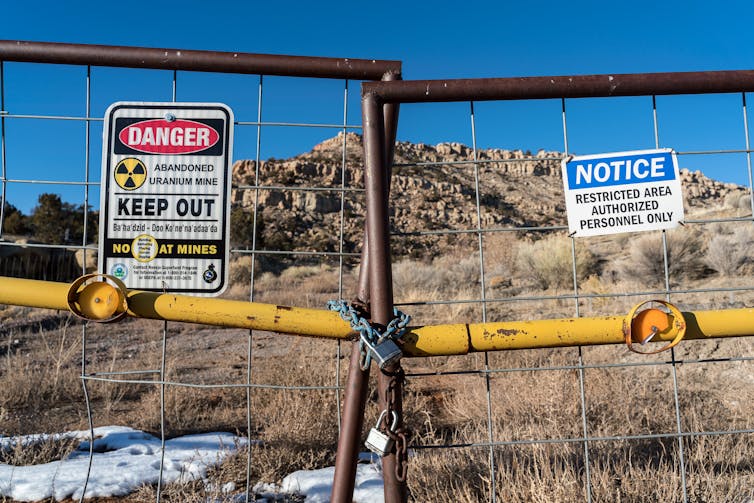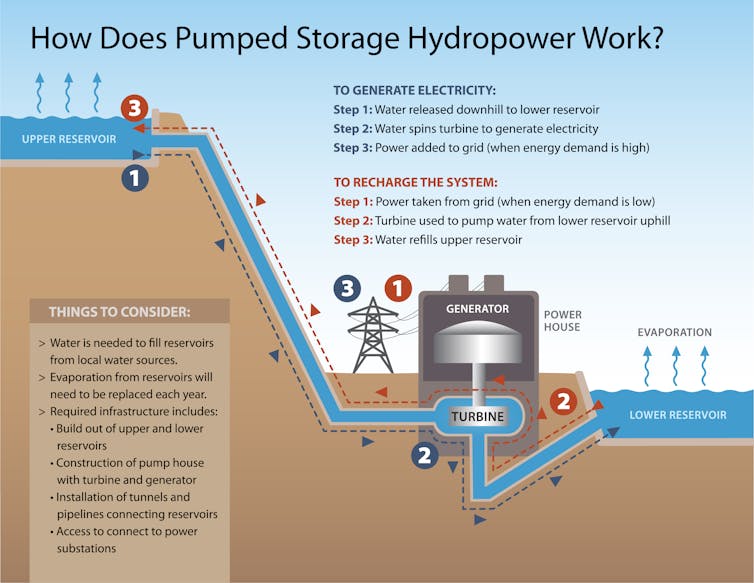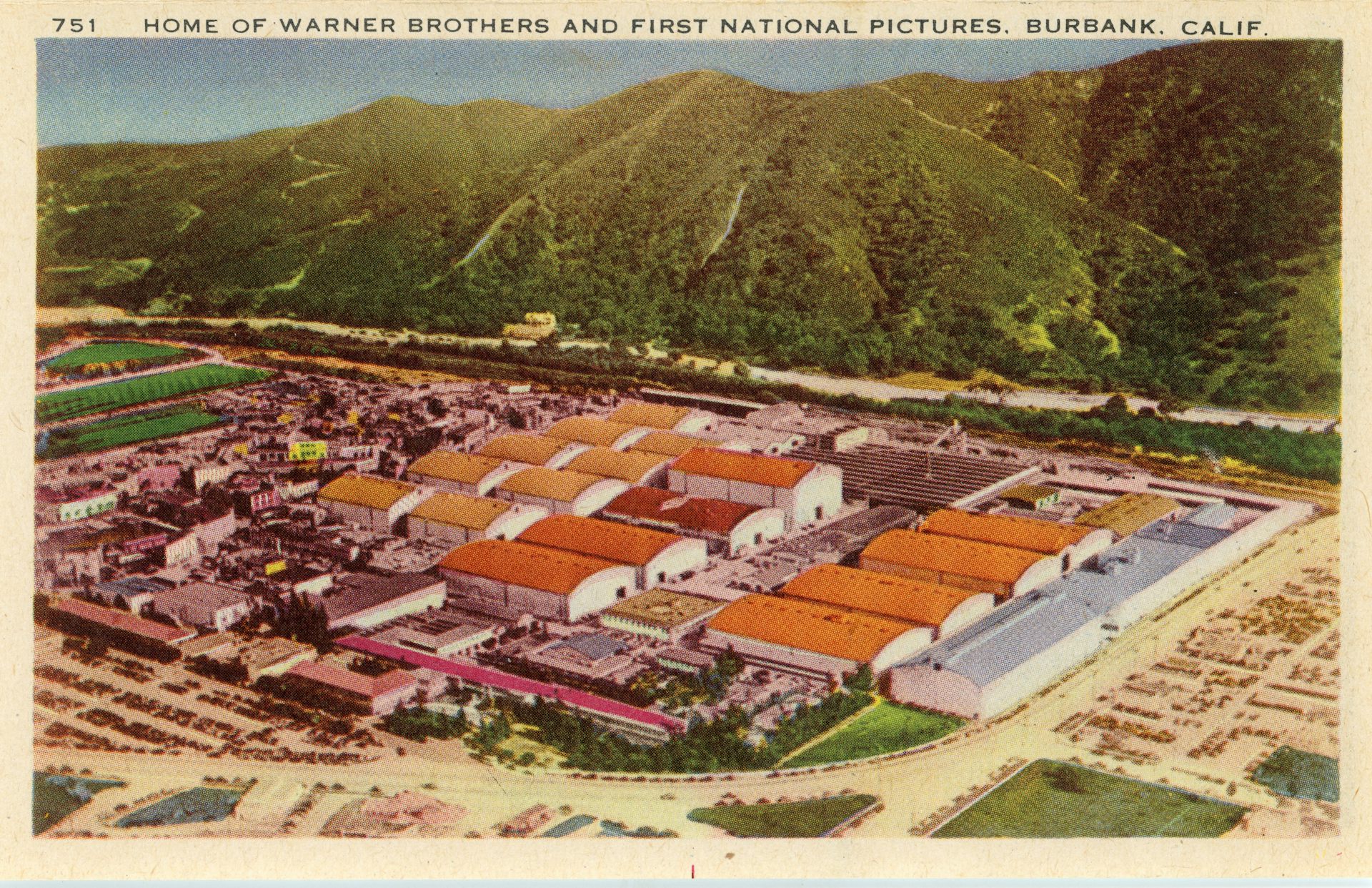Native American voices are finally factoring into energy projects – a hydropower ruling is a victory
The Federal Energy Regulatory Commission recently ruled that it won’t approve energy projects on Native lands without tribal consent. But many more applications are pending.
The U.S. has a long record of extracting resources on Native lands and ignoring tribal opposition, but a decision by federal energy regulators to deny permits for seven proposed hydropower projects suggests that tide may be turning.
As the U.S. shifts from fossil fuels to clean energy, developers are looking for sites to generate electricity from renewable sources. But in an unexpected move, the Federal Energy Regulatory Commission denied permits on Feb. 15, 2024, for seven proposed hydropower projects in Arizona and New Mexico.
The reason: These projects were located within the Navajo Nation and were proposed without first consulting with the tribe. FERC said it was “establishing a new policy that the Commission will not issue preliminary permits for projects proposing to use Tribal lands if the Tribe on whose lands the project is to be located opposes the permit.”
We are a cultural anthropologist and a water resource geographer who have studied tensions between Indigenous rights, climate governance and water management in the U.S. and globally for over 20 years. In our view, the commission’s decision could mark a historic turning point for government-to-government relations between the U.S. government and tribal nations.
How might this new approach shape future energy development on tribal lands throughout the U.S.? Given the federal government’s long history of exploiting Native American resources without tribal consent, we’re following FERC’s actions for further evidence before assuming that a new era has begun.
Extraction on tribal lands
Around the world, many Indigenous communities argue that their lands have been treated as sacrifice zones for development. This includes the U.S., where the federal government holds 56.2 million acres in trust for various tribes and individuals, mostly in western states.
The trust responsibility requires the U.S. government to protect Indigenous lands, resources and rights and to respect tribal sovereignty. Consulting with tribes about decisions that affect them is fundamental to this relationship.
Energy resources on U.S. Native lands include coal, oil, uranium, solar, wind and hydropower. There is a long history of coal and uranium mining in Navajo territory in the Southwest, and tribal lands now are targets for renewable energy projects. Large fractions of known reserves of critical minerals for clean energy, like copper and cobalt, are on or near Native lands.

Many past energy projects have left scars. Navajo lands are studded with abandoned uranium mining sites that threaten residents’ health. Over 1.1 million acres of tribal lands have been flooded by hundreds of dams built for hydropower and irrigation. Fossil fuel pipelines like Dakota Access in North Dakota and Line 5 in Wisconsin and Michigan carry oil across Native lands, threatening water supplies in the event of leaks or spills.
Hydropower project impacts
The seven permits FERC denied in February 2024 were requested by private companies seeking to build pumped hydropower storage projects. These systems pump water uphill to a reservoir for storage. When power is needed, water is released to flow downhill through turbines, generating electricity as it returns to a lower reservoir or river.
Currently there are over 60 pumped storage proposals pending across the U.S. Pumped storage typically requires constructing massive concrete-lined tunnels, powerhouses, pipelines and transmission systems that can damage surrounding lands.
Withdrawing water for hydropower could disrupt rivers and sacred sites that are culturally and spiritually important for many tribes. These projects also threaten water security – a critical issue in arid western states.
Colorado River water is already over-allocated among western states, which hold legal rights to withdraw more water than is in the river. As a result, many pumped storage projects would require groundwater to fill their reservoirs. The proposed Big Canyon project in Arizona, for example, would require up to 19 billion gallons of groundwater, taken from aquifers that support local springs and streams.

FERC’s trust responsibility
The Federal Energy Regulatory Commission is an independent agency that licenses and oversees interstate transmission of electricity, natural gas and oil; natural gas pipelines and terminals; and hydropower projects. Under a 1986 law, the agency is required to consider factors including environmental quality, biodiversity, recreational activities and tribal input in making licensing decisions.
However, the U.S. government has a long record of carrying out projects despite Native opposition. For example, under the Pick-Sloan Plan, the U.S. Army Corps of Engineers built five dams on the Missouri River in the late 1950s and early 1960s that flooded over 350,000 acres of tribal lands. Tribes were not consulted, and communities were forcibly relocated from their ancestral homelands.
In 2000, President Bill Clinton issued Executive Order 13175, directing federal agencies to engage in “regular and meaningful consultation and collaboration with tribal officials” in developing federal policies that affect tribes. Each agency interprets how to do this.
In his first week in office in 2021, President Joe Biden reaffirmed this responsibility and nominated U.S. Rep. Deb Haaland as Secretary of the Interior – the first Native American to head the agency that administers the U.S. trust responsibility to Native Americans and Alaska Natives.
FERC’s new direction
Tribes have called FERC’s record of consultation with Native Americans “abysmal.” Recently, however, the agency has started to make its operations more inclusive.
In 2021, it created a new Office of Public Participation, a step its then-chair, Richard Glick, called “long overdue.” And in 2022, the agency released its Equity Action Plan, designed to help underserved groups participate in decisions.
In canceling the projects in February, FERC cited concerns raised by the Navajo Nation, including negative impacts on water, cultural and natural resources and biological diversity. It also stated that “To avoid permit denials, potential applicants should work closely with Tribal stakeholders prior to filing applications to ensure that Tribes are fully informed about proposed projects on their lands and to determine whether they are willing to consider the project development.”
Aligning clean energy and environmental justice
Many more energy projects are proposed or envisioned on or near tribal lands, including a dozen pumped storage hydropower projects on the Colorado Plateau. All 12 are opposed by tribes based on lack of consultation and because tribes are still fighting to secure their own legal access to water in this contested basin under the 1922 Colorado River Compact.
We recently analyzed FERC’s handling of the Big Canyon pumped hydropower storage project, which would be located on Navajo land in Arizona, and concluded that the agency had not adequately consulted with the tribe in its preliminary permitting. In the wake of its February ruling, the agency reopened the public comment period on Big Canyon for an additional 30 days, with a decision likely later in 2024.
The Biden administration has set ambitious targets for halting climate change and accelerating the shift to clean energy while promoting environmental justice. In our view, meeting those goals will require the federal government to more earnestly and consistently live up to its trust responsibilities.
Emily Benton Hite has received funding from the National Science Foundation and the Social Science Research Council. She is affiliated with Save the World's Rivers and the Global River Protection Coalition.
Denielle Perry is affiliated with the Global River Protection Coalition, the Wild and Scenic Rivers Coalition and the IUCN WCPA Freshwater Specialist Group.
Read These Next
What’s at stake in Trump’s executive order aiming to curb state-level AI regulation
In the absence of comprehensive federal AI regulation, states have stepped in. The Trump administration,…
Data centers need electricity fast, but utilities need years to build power plants – who should pay?
How many data centers will be built – and how much electricity they’ll need – is uncertain. Being…
Sleep problems and depression can be a vicious cycle, especially during pregnancy − here’s why it’s
Inadequate sleep can have negative downstream effects on everyday cognitive functioning and mental health,…





